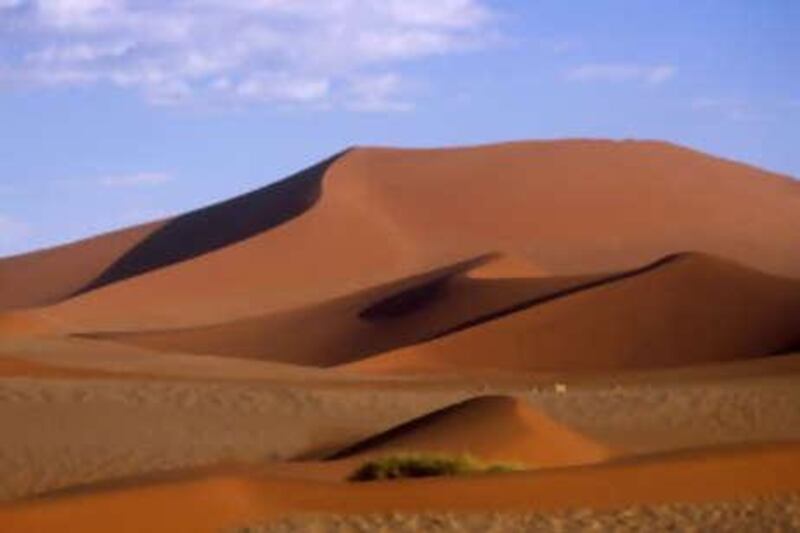It was not that long ago that gazelles outnumbered people in the vast deserts of the Arabian peninsula. Now, with the rapid modernisation in the UAE having had a profound effect on local flora and fauna, the Arabian gazelle is estimated to have a global population of less than 20,000 and the sand gazelle has been placed on the list of endangered species. The sand gazelle, the second-largest antelope found in the UAE, is light brown in colour, with mature animals having almost completely white heads. Males and females both have horns, although the male's are broader, with more hooked tips. Unlike the females, the males have large scent glands on their faces. Because the gazelles inhabit such large tracts of land, these assist the animals in finding new grazing areas.
The UAE is also home to what remains of the mountain gazelle population, known to inhabit the gravel plains and foothills of the Arabian Peninsula, where acacia trees are abundant. One of only a handful of mammals whose biological adaptations allow them to survive in the harsh desert climate, gazelles have a similar method of water conservation to that of the camel and both species can live without surface water for significant amounts of time without suffering dehydration.
The internal temperature of human beings is relatively constant; too much fluctuation can be harmful to the health of organs. Humans maintain their temperature through a metabolic process called homeostasis. Using an internal receptor, which senses environmental changes, information gathered here is sent to the control centre, which determines the appropriate physiological response to the external change in temperature - the results of which can be sweating, or shivering, both of which help to maintain a stable internal environment.
However, the Arabian sand gazelle has evolved a much higher tolerance for temperature fluctuations. The animal's metabolic process is called heterothermy, a process that works to minimise water loss through a complex system whereby the animal's body temperature fluctuates significantly with the outside temperature. Scientific studies have shown that the sand gazelle collects and stores heat during the day and dissipates it throughout the night. So when the metabolic activity of the animal decreases, so too does its body temperature. When the gazelle is in an environment where the temperature reaches extreme highs, its body temperature is able to fluctuate by roughly 10°C.
The capillary network around the animal's main arteries also employs a cooling system; the blood's temperature is decreased significantly before it reaches the brain. In a process similar to that of camels, gazelles force air through their nostrils, which has a cooling effect and costs the animal only a minimal amount of energy. In the absence of an abundance of surface water, the sand and mountain gazelles of the Arabian Peninsula extract moisture from almost everything they consume. With a diet consisting largely of foliage - herbs, shrubs and fresh grasses - the animal can switch its eating habits according to what is available and the environmental conditions.
While the gazelle will drink at every given opportunity, this can often be few and far between. Water loss through faeces and urine is reduced to a minimum, as the animals extract every usable part of food that can be stored. As well as Arabia, the gazelle can be found in Africa, Asia, Siberia and China. One of the only hoofed animals, or ungulates, regularly to give birth to twins, gazelles have a gestation period of six months, after which the calves are kept in bush areas, away from predators, until they can walk with the adults. Most young are born in either the spring or the autumn. In the wild, a gazelle can live between 10 and 12 years.
Territorial by nature, the gazelle's first response to predation is to freeze and, if the aggressor comes closer, to dart away. Its light colour helps the animal to blend into its sandy surroundings, and its speed helps it to outrun predators. Gazelles can reach up to 60kph and are known for being excellent jumpers. An area in Al Gharbia is currently being used to rehabilitate gazelles. @Email:jhume@thenational.ae






